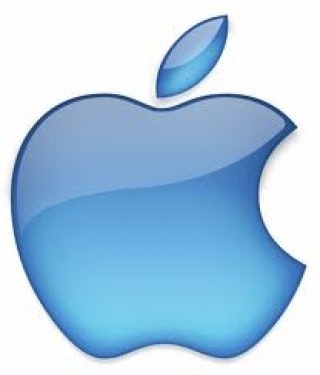 In the past few years, diversification may have seemed like a bad idea, especially when it comes to global investing.
In the past few years, diversification may have seemed like a bad idea, especially when it comes to global investing.
In just the past two years, the S&P 500 has risen a solid 40% while the iShares MSCI Emerging Markets Indx (ETF) (NYSEARCA:EEM) index has fallen 10%.
Even the much-vaunted Chinese economy, which has been the fastest-growing major economy in the world, has trailed the S&P 500 index by some 50 percentage points in that time (as measured by the iShares FTSE/Xinhua China 25 Index (ETF) (NYSEARCA:FXI)).
Let’s face it, life would be easier if we just focused our energy on U.S. stocks and bonds. After all, our financial media deliver a healthy dose of news and analysis every day on companies like Apple Inc. (NASDAQ:AAPL), The Boeing Company (NYSE:BA) and General Electric Company (NYSE:GE).
Are you well versed in the current state of business for China Southern Airlines Co Ltd (ADR) (NYSE:ZNH)? How about England’s Vodafone Group Plc (ADR) (NASDAQ:VOD), Europe’s largest wireless service provider? Or BRF SA (ADR) (NYSE:BRFS), one of Latin America’s largest food purveyors?
No? Well, neither are the rest of us.
In fact, if you’ve steered clear of foreign markets in the past few years, you probably feel vindicated. And after seeing these foreign markets stumble so badly in recent years, you probably have no plan to venture abroad any time soon with your investment portfolio.
Indeed right around the time that U.S. stocks began to pull away from their foreign peers, I cautioned that it was time to expect some emerging-market indigestion.
Yet for two very powerful reasons, it’s crucial that you start paying attention to foreign markets. They’re the crucial investment that your portfolio may be missing right now. There is a window of opportunity opening, and a half decade from now, you could well be kicking yourself for ignoring it.
Those two reasons? Growth and value.
You’ve read all the studies, but the notion bears repeating: Emerging markets have been growing — and will likely keep growing — at a much faster pace than in Europe and the U.S.
The Chinese economy has averaged 9% growth over the past 10 years. Just to the west, the Indonesian economy has expanded at a 5.6% annual pace. In Brazil, that figure stands at 3.6%. Here in the U.S., our economy has grown just 1.5% annually.
And there’s no reason to expect any change in the years ahead. That’s because these economies have embarked upon a virtuous cycle. It’s a cycle that benefited our economy for a generation after World War II and did same for the Japanese and South Korean economies in subsequent generations.
That cycle: the wealth effect fueled by rising middle-class consumption. As consumers earn more, they begin to spend more in restaurants, at department stores, on travel and on entertainment. And that drives up demand for a variety of new businesses that cater to consumer appetites.
Let’s take a typical Brazilian family as an example. A couple in their 50s may not be well-educated, but they have scrimped and saved to help send their kids to school to learn how to become electricians, plumbers, bank tellers, professors, computer salespeople, etc. As that next generation progresses, the need arises for more lawyers to write up wills and other contracts, for more car dealers to sell them new cars, for doctors as more people obtain better health care, and so on.
To extend the analogy to the U.S., the standard of living in the U.S. in 1960 was far better than 1945, thanks to advent of national highways, economically built new homes and agricultural efficiency gains, which lowered the food bill for many people. Yet our standard of living is now so much higher than it was in 1960. To complete this analogy, Brazil, China, Thailand and many other countries haven’t even gotten to 1960 yet. And if you invested heavily in U.S. stocks in 1960, you’d be very rich today.
With that growth backdrop in place, it’s time to focus on the value argument. Thanks to a robust two-year run, the S&P 500 is valued at 15 to 16 times projected 2013 earnings. The multiple on emerging markets: 11. Think about it: The slower-growing economy has a much higher value, and the faster growing regions of the world are much cheaper.
Still, it’s fair to wonder why investors aren’t seizing on this disconnect right now and loading up on foreign stocks. The simple explanation: There is still a great deal of global economic uncertainty. And in times of uncertainty, investors (both here and abroad) focus their energy on the U.S. economy, which has a long track record of resiliency.
When will this uncertainty end? Probably when emerging economies such as Brazil, China and others appear to return to a firmer and steadier growth path. That could come as soon as this year. Or it might not happen for another year or two. It doesn’t matter. It’s crucial to think about foreign investments as a long-term opportunity and not a short-term trade. It’s wise to have some of your portfolio assets in these markets for decades, not quarters.
Action to Take –> If you waited to invest in the economic expansions in Japan in the 1960s and ’70s and in South Korea in the 1980s and ’90s until they had matured, then you missed the boat. The key is to invest in emerging economies when they are still experiencing growing pains. If you’ve avoided the seemingly scarier emerging markets up until now, it’s time be bold and venture abroad.
This article was originally published at InvestingAnswers.com
The One Crucial Investment Your Portfolio Is Probably Missing
– David Sterman
The article Warning: No Portfolio Is Complete Without This Sector originally appeared on StreetAuthority and is written by David Sterman.
David Sterman does not personally hold positions in any securities mentioned in this article. StreetAuthority LLC does not hold positions in any securities mentioned in this article.





